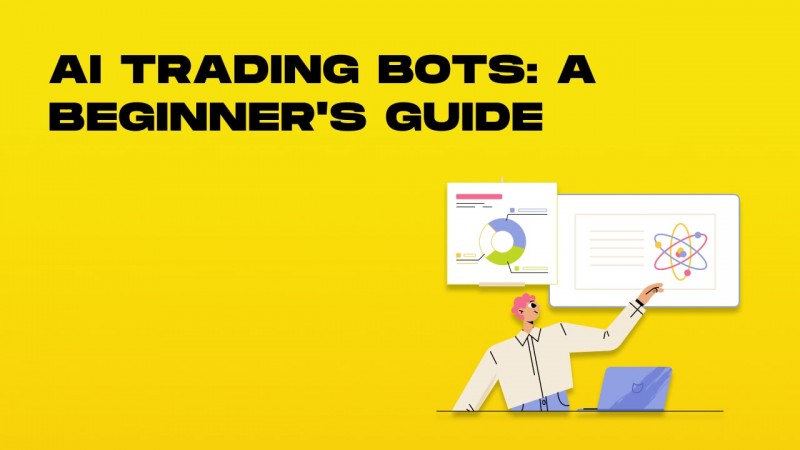20 Good Advice On Deciding On AI Stock Predictions Analysis Websites
20 Good Advice On Deciding On AI Stock Predictions Analysis Websites
Blog Article
Top 10 Tips On Assessing The Integration And Compatibility Of Ai Analysis And Prediction Of Stocks Trading Platforms
AI stock predicting/analyzing platforms must be compatible and integrate seamlessly with the existing systems, tools and workflows. A platform that integrates seamlessly with your existing workflows and tools will improve efficiency and efficiency. Here are 10 strategies to help you analyze the compatibility and integration of these platforms.
1. Check Brokerage Integration
Integration of the platform with your preferred broker or trading accounts: Ensure whether the platform integrates with the brokerage you have chosen or account.
Trade execution: Check whether the platform allows direct trade execution through the integrated broker.
Account synchronization: Make sure that the platform can update in real-time accounts, balances and positions as well as transaction history.
2. Assessment of API availability
API access - Check that the platform comes with an API to allow developers to create customized tools or automate work processes.
API documentation: Ensure that the API is properly documented, with use-cases and examples.
Rate limits: Check whether there are acceptable rate limits on the API and if it is able to handle your anticipated usage volume.
3. Review the Third-Party Integration
Popular Tools: Ensure that that the platform is compatible with other software, like Google Sheets and Excel.
Data export/import. Check that the platform is able to export/import easily from/to other tools.
Plugins/extensions: Verify if the platform can support extensions or plugins for further functionality.
4. Test Compatibility with Operating Systems
Desktop compatibility. Make sure your preferred operating system (Windows, macOS, Linux) is compatible with.
Mobile compatibility Check if the platform has an application that works with iOS or Android.
Web-based access (for additional flexibility) Verify that the platform is accessible via the web browser.
5. Evaluation of Data Integration Capabilities
Data sources: Make sure the platform integrates with multiple data sources (e.g., market data providers, news feeds, social media sentiment).
Real-time feeds of data: Verify that the platform allows for real-time data integration to give the most current analysis.
Historical data import: Verify if the platform permits importing historical data to backtest or analyze.
6. Check compatibility with cloud and on-premise
Cloud-based platforms: Ensure that the platform is accessible from anywhere that has an internet connection.
On-premises Solutions: If you would like to run your application on premises, make sure the platform is compatible.
Make sure the platform is a hybrid option that combines both on premises and cloud capabilities.
7. Verify Cross Platform Synchronization
Device synchronization. Check that data and settings are synced across all platforms (desktops tablets and mobiles).
Check that changes made on one device immediately reflect on the other devices.
Offline Access: Examine for any limitations on the platform's functionality or data access when it's offline.
8. Assess the Compatibility of Trading Strategies
Trading strategies that are automated or algorithmic ought to be backed by the trading platform.
Custom indicators: Determine whether you are able to utilize custom indicators or scripts.
Backtesting strategy: Find out whether your platform permits the backtesting of trading strategies with historical data.
9. Assess Security and Compliance
Data encryption: Make sure whether the platform is using encryption to safeguard data in transit and at rest.
Authentication: Check if the platform has secure authentication methods for example, two-factor authentication.
Regulative compliance: Make sure that the platform complies wth relevant regulations.
10. Test Scalability and Performance
Scalability - Make sure the platform you choose can meet your ever-growing demands in terms of both users and data.
Performance when under stress: Check whether your platform is able to adapt to market conditions with high volatility.
Resources used - Ensure whether the platform is using the resources of the system, such as CPU, memory or bandwidth.
Bonus Tips
User feedback: Use testimonials from users to assess the integration capabilities of the platform.
Free Trial: Test the platform's integration with existing tools and workflows using trial or demo.
Customer Support: Make sure your platform has a robust assistance to help with integration problems.
Check these suggestions to determine the integration and compatibility between AI stock predicting/analyzing platforms and your current trading systems and ensure that they increase your trading efficiency. Have a look at the best ai stock trading app tips for website info including ai investment app, ai for investment, ai for stock predictions, ai trading tools, ai stock picker, ai stock trading app, ai for investment, ai trading, ai investment app, ai trade and more.
Top 10 Tips On Assessing The Regulatory Compliance Of Ai Stock-Predicting/Analyzing Trading Platforms
Regulatory compliance is a critical aspect to consider when considering AI platform for analyzing and predicting stocks. Compliance ensures that the platform is in compliance to financial regulations and is operating within legal frameworks, and safeguarding user information. This lowers the possibility of financial penalties or legal concerns. Here are top 10 tips on how to assess the conformity of these platforms.
1. Verify Registration and License
Regulators: Make sure the platform is registered with and licensed by relevant financial regulatory authorities (e.g., SEC in the U.S., FCA in the UK, ASIC in Australia).
Verify broker partnerships. If the platform incorporates brokers, ensure that they are properly licensed and regulated.
Public records: You may check the website of the regulatory body to determine whether the platform is registered and if there have had any violations over the years.
2. Measure Data Privacy Compliance
GDPR If you're operating or providing services to users in the EU Make sure the platform is compliant to the General Data Protection Regulation.
CCPA : California Consumer Privacy Act (CCPA) compliance should be checked by users.
Data handling policies: Read the platform's data privacy policy to determine the ways in which user data is gathered and stored. It also outlines how data is transferred.
3. Examining anti-money laundering measures
AML policies - Check that the platform's AML policies are robust and efficient to detect the existence of money laundering.
KYC procedures: Verify if the platform follows Know Your Customer (KYC) procedures to verify identity of the user.
Monitoring transactions: Ensure that the platform monitors transactions to spot suspicious behaviour and alerts relevant authorities.
4. Make sure that you are in Compliance of your business with Trading Regulations
Market manipulation: Make sure that the platform is equipped with measures to protect against manipulation of the market such as spoofing and wash trading.
Order types: Ensure that the platform adheres to regulations regarding order types.
Best execution: Make sure to see if the platform adheres best execution practice to ensure that trades will be executed at the cheapest cost.
5. Review Cybersecurity Compliance
Data encryption: Make sure the platform protects data during transit and while at rest by encrypting it.
Response to incidents: Verify if the platform has a clear incident response strategy for cyberattacks or data breaches.
Certifications: Check if the platform has cybersecurity certifications (e.g., ISO 27001, SOC 2).
6. Transparency & Disclosure:
Disclosure of fees. Make sure that all charges and fees are disclosed clearly, including any hidden charges or fees.
Risk disclosure: See if there are clear disclosures of the risk, especially for high-risk or leveraged trading strategies.
Performance reporting: Find out whether the platform is precise and transparent performance reports for its AI models.
7. Verify that you are in compliance with International Regulations
Trading across borders: If you are trading internationally, be sure the platform you use is in compliance to all laws and regulations.
Tax reporting: Find out whether the platform offers tools or reports to aid users in complying with tax regulations (e.g., FIFO rules in the U.S.).
Compliance with international sanctions: Make sure the platform strictly adheres to these rules and does not allow transactions between countries or entities that are banned.
8. Review Audit Trails and Record-Keeping
Transaction records: Verify that the platform keeps detailed records for regulatory purposes and audit.
User activity logs - Make sure that the platform is recording all user activity such as transactions that are made as well as any changes made to your account settings.
Audit readiness: Verify that the platform is able to supply all the necessary documentation and logs if the need for a regulatory audit arises.
9. Verify compliance with AI-specific regulations.
Algorithmic trading regulations: If your platform is able to support algorithmic trading, be sure that it is compliant with the regulations such as MiFID II in Europe or Reg SCI in the U.S.
Fairness and bias Find out whether the platform modifies or monitors its AI models to ensure ethical and fair trading.
Explainability: Some laws require that platforms give explanations for AI-driven predictions or choices.
10. Review the User's Feedback and the Review Regulatory History
User reviews: Conduct research to assess the platform's reputation for the regulatory conformance.
Regulatory history - Check to determine if the website is known for any past penalties or violations of regulations.
Third-party Audits: Ensure that the platform has been subjected to third-party inspections to make sure it's conforming to all laws and regulations.
Bonus Tips
Legal consultation: Talk to an expert in the field of law regarding the platform's conformity to relevant regulations.
Trial period: Make use of a no-cost demo or trial to test the compliance features available on the platform.
Customer Support: Verify that the platform has customer support for any queries or issues with compliance.
Following these tips can help you evaluate the regulatory compliance of an AI trading platforms that predict and analyze stocks. You can select a platform that is compliant with the legal frameworks and safeguards your interests. Compliance not only lowers the risk of legal violations, but it also helps build trust and confidence in the services of the platform. Have a look at the most popular killer deal for best stock prediction website for more examples including best stock prediction website, ai stock trader, chart analysis ai, best ai stocks to buy now, ai stock prediction, best ai stock prediction, ai stock prediction, stocks ai, ai stock price prediction, chart ai trading and more.